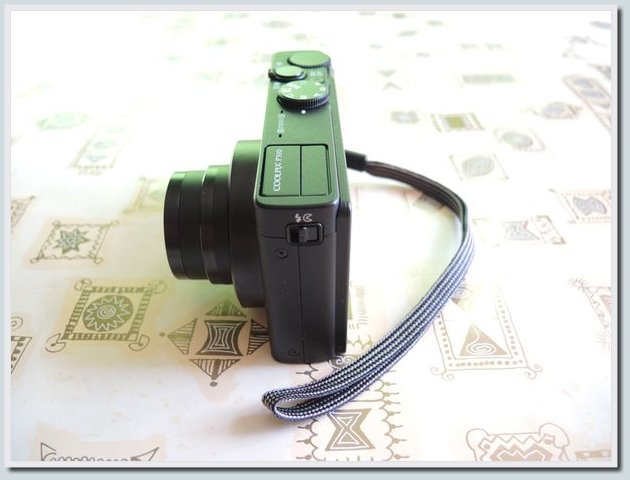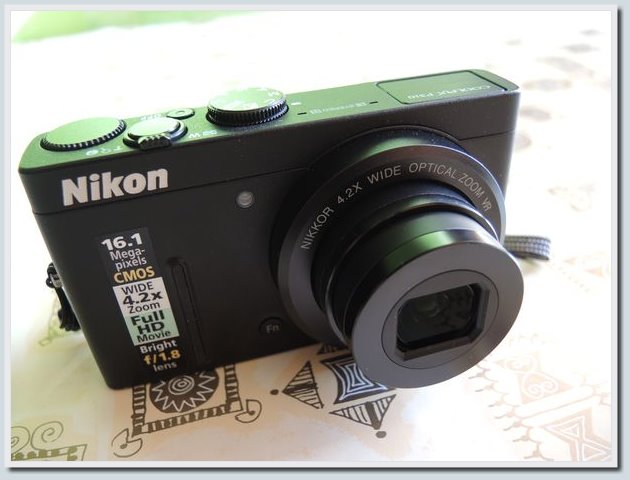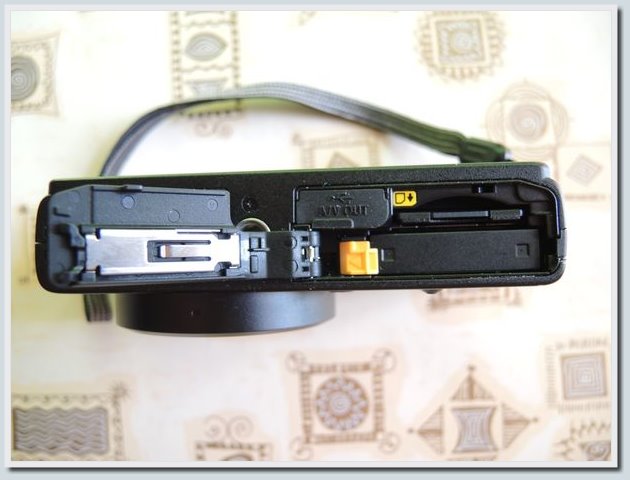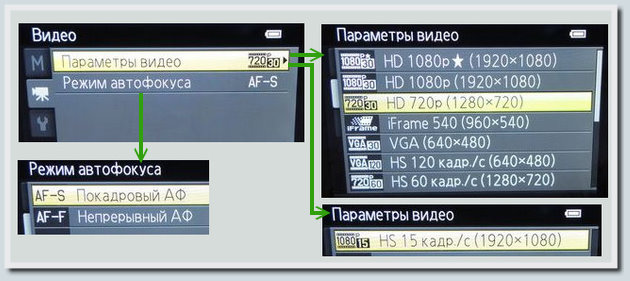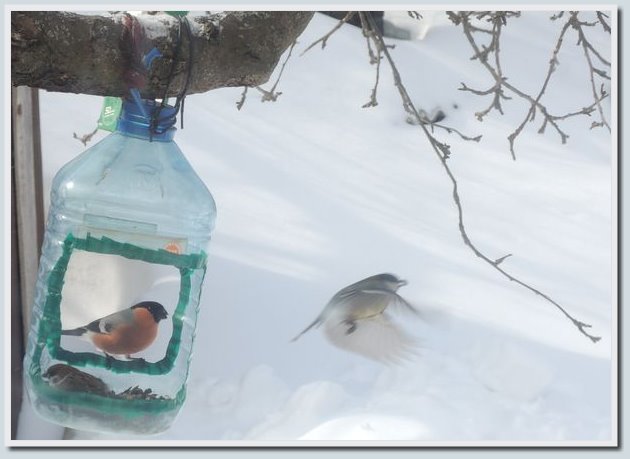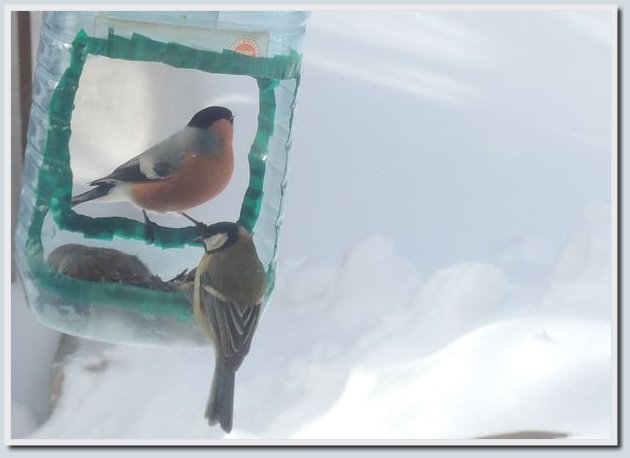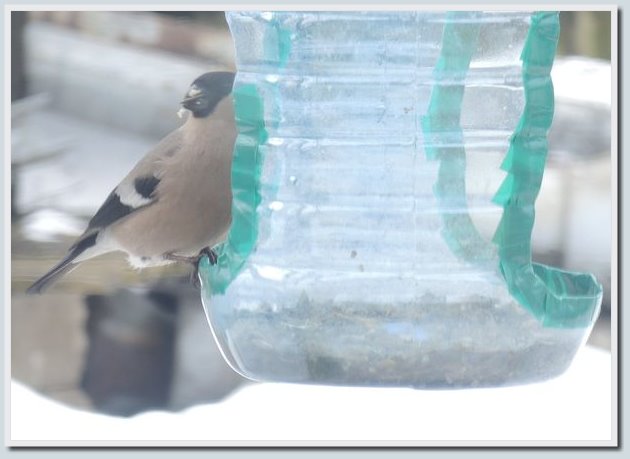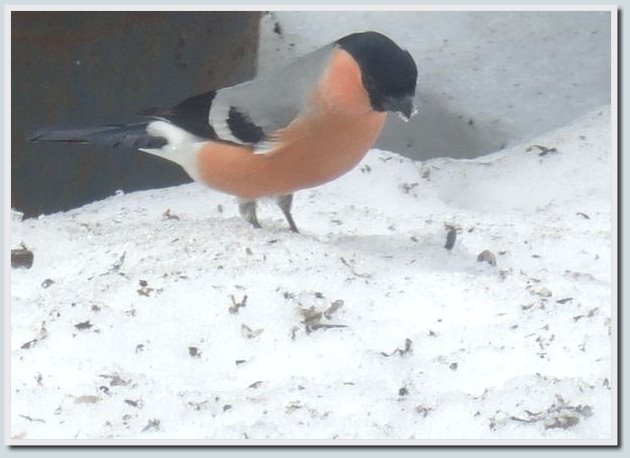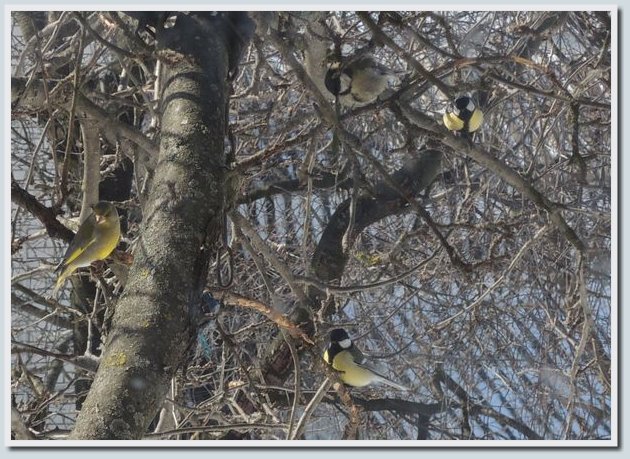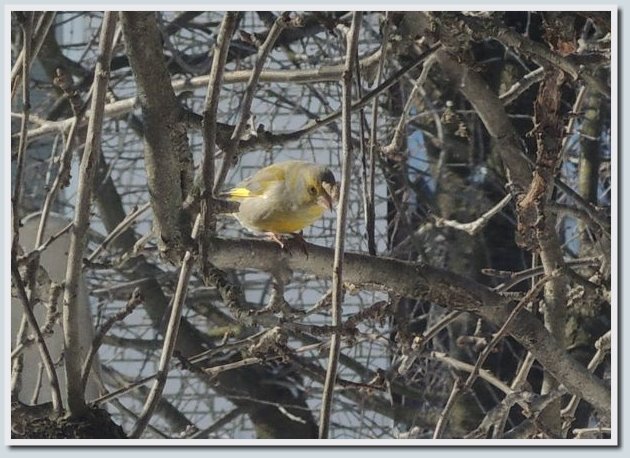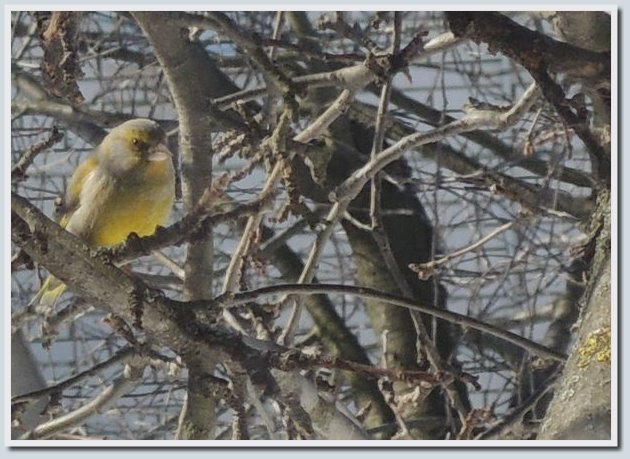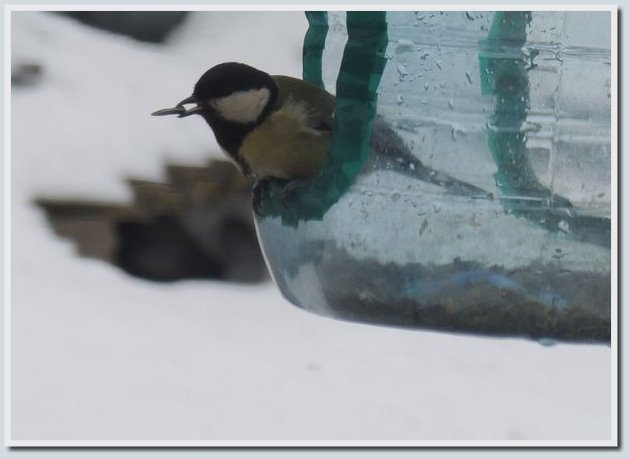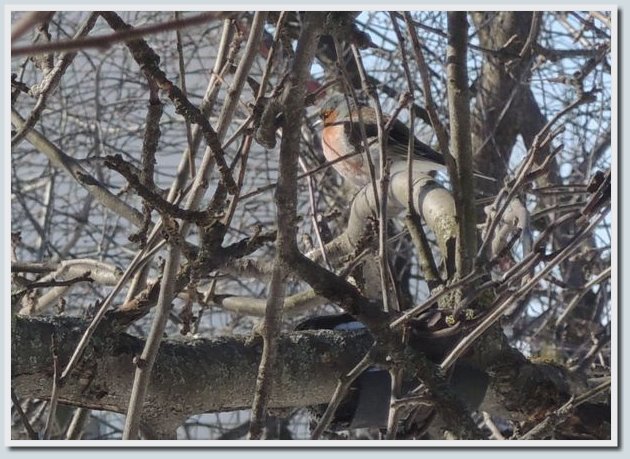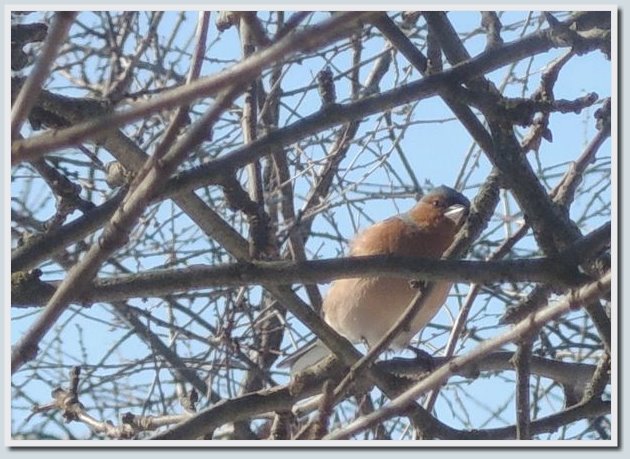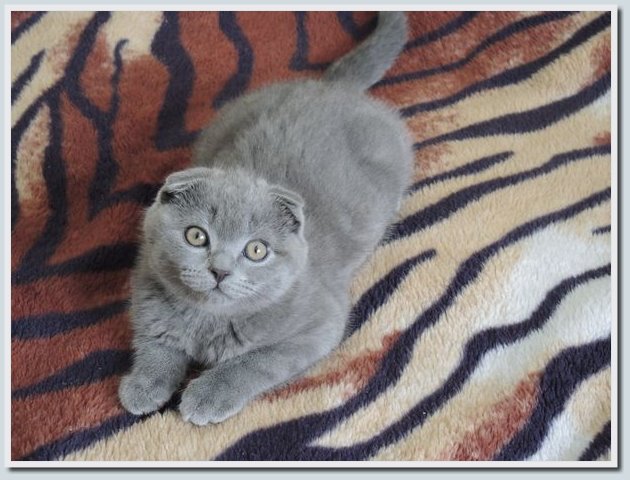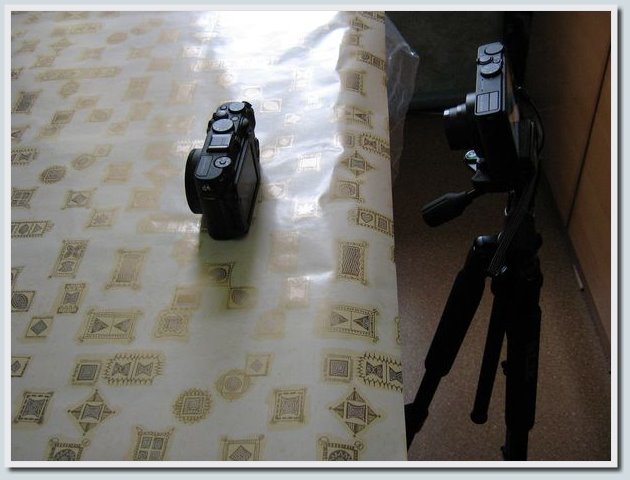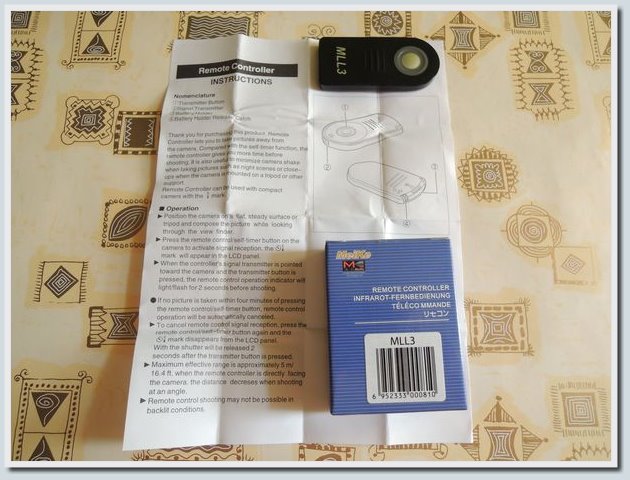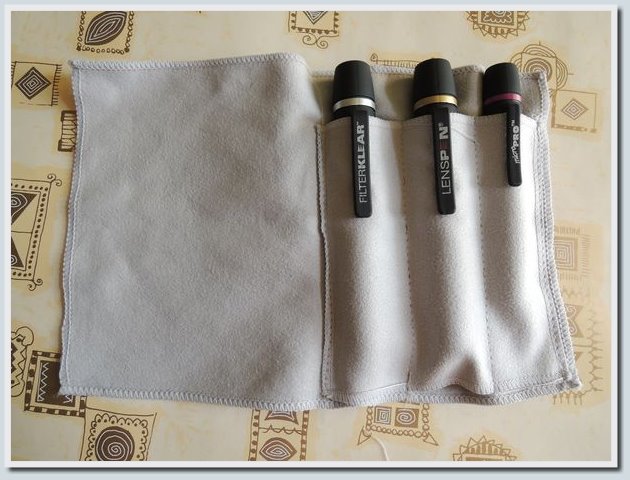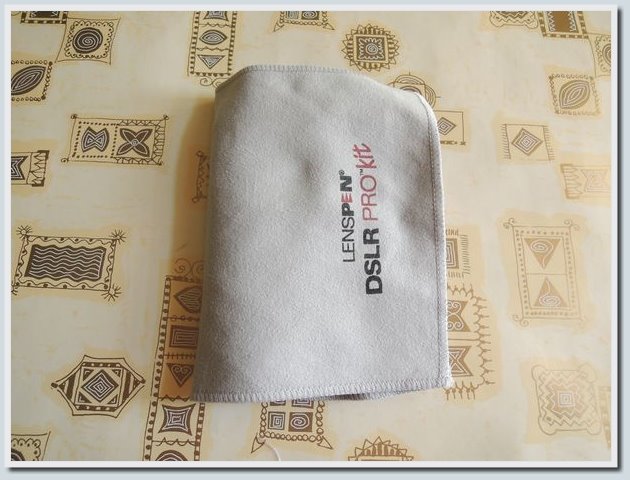Coolpix P7700 and Coolpix P310 - two practical compacts from Nikon
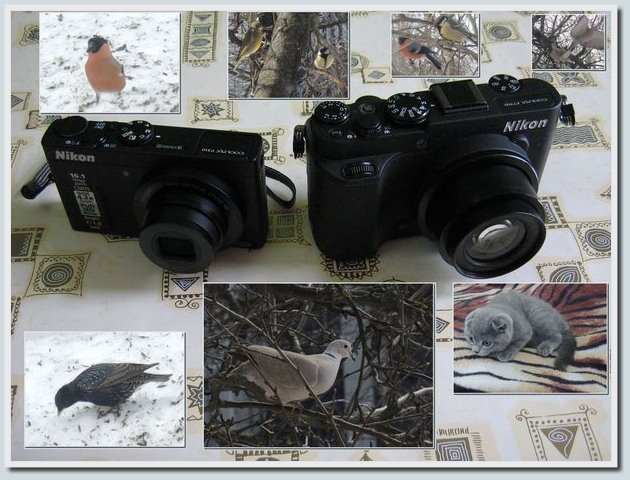
While I am waiting for a new product from Samsung - the Samsung Galaxy Note 8 tablet , I decided to try to describe 2 Nikon compact cameras - the Coolpix P7700 and Coolpix P310.
The smallest of the described models fits easily into the inner pocket of the jacket, and, despite its compact dimensions, makes it possible to take decent pictures. The older model Coolpix P7700 is equipped with a better matrix, a fast NIKKOR zoom lens with 7.1x zoom and a fast aperture, making the space for photo and video experiments that this tool opens before you huge.
At the time when I tested these cameras, the weather in Kiev, despite the end of March, was snowy and winter ( 1 , 2 , 3) It is frosty outside, with a snowstorm outside the window, roads and sidewalks under a thick snow layer. All in all, it was fun! Although the blizzard subsided over time, the frost remained for many days, so most of the photos for this test review had to be taken indoors. In such a difficult situation, I was rescued by a feeding trough, which can be seen from the windows of my house, as well as birds, who kindly agreed to pose in front of the camera for sunflower seeds.
The manual control capabilities in both cameras were very pleased: the shutter speed and aperture adjustment wheels are exactly where you need them, quick access to white balance, light sensitivity (ISO) and exposure compensation in the COOLPIX P7700, programmable buttons in the two models under consideration, all this is very, very by the way. You will find more information about cameras, examples of pictures and captured video with birds of different species under Habrakat (Caution, traffic - photos and slideshows).
Thanks to Nikon Ukraine, I had the opportunity to experiment with Nikon cameras from the Performance series (COOLPIX P300, COOLPIX P310, COOLPIX P7100 and COOLPIX P7700 were in my hands), but I have not described cameras until this point and this will be my first review of photographic equipment .
Before starting this review, I looked through most of the articles from the Phototechnics hub . I thought that some articles from this Hub should be added to this review, as pointers to theoretical materials and practical recommendations on photography, I give the links below:
- Theory of photography: The
basics of photography: shutter speed, aperture, depth of field, photosensitivity , Learning to photograph , What is the crop factor , Mirrorless revolution - Digitizing negatives and positives:
Digitizing 35mm film , Digitizing large negatives , How I digitalized films, and not only - A few practical things for the future:
12 ways not to mess with the flash ; Nikon Hand Strap II wrist strap as an alternative to a neck strap ; A couple of useful sites for choosing photo equipment
And now, in fact, we proceed to continue the review.
Options, device appearance, technical specifications
The equipment of the cameras looks something like this:
Nikon COOLPIX P310:
Camera strap, EN-EL12 lithium-ion battery (with protective cover), AC charger EH-69P, USB cable UC-E6, audio / video cable EG-CP16, ViewNX 2 installation CD, Nikon COOLPIX P7700 detailed user guide CD: Camera belt, LC-CP26 lens cap (attached to the camera body), EN-EL14 lithium-ion battery (with protective cover), MH charger -24, UC-E17 USB cable, EG-CP16 audio / video cable, installation computer CD-ROM ViewNX 2, a CD with a detailed user manual Technical characteristics of both devices are given below in the form of a comparative table


(for compactness, I hid the table under the habrakat):
Technical specifications Nikon COOLPIX P310 and Nikon COOLPIX P7700
Additional information on the Nikon COOLPIX P310 and Nikon COOLPIX P7700 models can be found on the official website.
| Nikon COOLPIX P310 | Nikon COOLPIX P7700 | |
|---|---|---|
| Effective Pixels | 16.1 million | 12.2 million |
| Matrix | 1 / 2.3 inches, type: CMOS; total number of pixels: approx. 16.79 million | 1 / 1.7 inches, type: CMOS; total number of pixels: approx. 12.76 million |
| Lens | NIKKOR 4.2x Optical Zoom | NIKKOR 7.1x Optical Zoom |
| Focal length | 4.3–17.9 mm (the angle of view is equivalent to a 24–100 mm 35 mm format lens [135]) | 6.0–42.8 mm (the angle of view is equivalent to a 28–200 mm lens in 35 mm format [135]) |
| F-number | f / 1.8-4.9 | f / 2–4 |
| Lens design | 7 elements in 6 groups | 13 elements in 10 groups (2 elements from glass ED) |
| Digital Zoom Zoom | Up to 2x (angle of view equivalent to approx. 200mm 35mm format lens [135]) | digital zoom Pictures: Up to 4x (angle of view equivalent to approx. 800 mm lens in 35 mm format [135]), movies: Up to 2x (angle of view equivalent to approx. 400 mm lens in 35 mm format [135]) |
| Vibration reduction | Extended with lens shift | Lens shift |
| Autofocus (AF) | AF with contrast detection function | AF with contrast detection function |
| Focus Distance Range | [W]: approx. 30 cm to infinity, [T]: approx. from 60 cm to infinity; in macro mode: approx. from 2 cm (wide) to infinity | [W]: approx. from 50 cm to infinity, [T]: approx. from 80 cm to infinity; in macro mode: approx. from 2 cm (in the wide-angle zoom position behind the triangle) to infinity (all distances are measured from the center of the front surface of the lens) |
| Focus Area Selection | Face priority, auto (automatic selection of 9 areas), centered, manual with 99 focus areas, subject tracking, AF with subject detection | Face priority, auto (auto-select 9 areas), center (wide-angle, normal), manual with 99 focus areas, subject tracking, AF with subject detection |
| Monitor | 7.5 cm TFT LCD with a resolution of approx. 921 thousand points, wide viewing angle, anti-reflective coating and 5-level brightness adjustment | 7.5 cm TFT LCD with approx. 921 thousand points, wide viewing angle, anti-reflective coating, five-level brightness adjustment and variable tilt angle |
| Frame coverage (in shooting mode and in playback mode) | Approx 100% horizontal and 100% vertical (compared to a real shot) | Approx 100% horizontal and 100% vertical (compared to a real shot) |
| Carriers | Internal memory (approx. 90 MB), SD / SDHC / SDXC memory card | Internal memory (approx. 86 MB), SD / SDHC / SDXC memory card, not compatible with Multi Media memory cards (MMC) |
| File system | Compatible with DCF, Exif 2.3, DPOF and MPF | Compatible with DCF, Exif 2.3, DPOF and MPF |
| File formats | Photos: JPEG 3D shots: MPO sound files (sound memo): WAV movies: MOV (video: H.264 / MPEG-4 AVC, sound: AAC stereo) | Snapshots: JPEG, NRW (RAW) (Nikon proprietary format), 3D images: MPO, sound files (voice memo): WAV, movies: MOV (video: H.264 / MPEG-4 AVC, sound: AAC stereo) |
| Image Size (in pixels) | 16 M [4608 x 3456], 8 M [3264 x 2448], 4 M [2272 x 1704], 2 M [1600 x 1200], VGA [640 x 480], 16: 9 12M [4608 x 2592] 16: 9 2M [1920 x 1080] 3: 2 [4608 x 3072] 1: 1 [3456 x 3456] | 12M [4000 x 3000], 8M [3264 x 2448], 4M [2272 x 1704], 2M [1600 x 1200], VGA [640 x 480], 3: 2 [3984 x 2656], 16: 9 9M [3968 x 2232], 1: 1 [3000 x 3000] |
| Shooting modes | “Auto”, “Plot” (“Auto Scene Selection”, “Macro”, “Portrait”, “Food”, “Landscape”, “Museum”, “Sports”, “Fireworks”, “Night Portrait”, “Black and White” white copy ”,“ Holiday / indoor. ”,“ Back lighting ”,“ Beach ”,“ Panorama ”,“ Snow ”,“ Pet portrait ”,“ Sunset ”,“ Special effects ”,“ Twilight / dawn ”,“ 3D photography ”,“ Night landscape ”), P, S, A, M,“ User settings ” | “Auto”, “Plot” (“Auto Scene Selection”, “Portrait”, “Landscape”, “Sports”, “Night Portrait”, “Holiday / Indoor”, “Beach”, “Snow”, “Sunset”, “Twilight / dawn”, “Night landscape”, “Macro”, “Food”, “Museum”, “Fireworks”, “Black and white copy”, “Backlighting”, “Panorama”, “Pet portrait”, “3D -photography ")," Special Effects ", P, S, A, M, User settings |
| Continuous shooting | “Single” (default setting), “Continuous B” (continuous shooting of images at a speed of 7 frames per second), “Continuous H” (shooting up to 30 images at a speed of about 1 frame per second), pre-recording buffer ( shooting up to 20 frames at a speed of approx. 15 frames per second), “Continuous B”: shooting at a speed of 120 frames per second (shooting 60 frames with a shutter speed of 1/125 s or less), “Continuous B”: shooting at a speed of 60 frames per second (shooting 60 frames with a shutter speed of 1/60 s or less), BSS (choosing the best shot), “Multi-shot 16”, “Shooting with an interval " | Single (default setting), Continuous B (up to 6 shots are continuously taken at a speed of about 8 frames per second), Continuous C (up to 6 pictures are shot continuously at a speed of about 4 frames per second), “Continuous H” (up to 30 shots are continuously taken at a speed of about 1 frame per second), BSS (choosing the best shot), “Multi-shot 16”, “Continuous. B: 120 frames per second "(60 frames shot at a speed of approx. 1/125 s or faster)," Continuous. B: 60 frames per second ”(60 frames shot at a speed of approx. 1/60 s or faster),“ Int. shooting " |
| Video | HD 1080p (Fine) (default setting): 1920 x 1080 / approx. 30 frames per second, HD 1080p: 1920 x 1080 / approx. 30 frames per second, HD 720p: 1280 x 720 / approx. 30 frames per second, iFrame 540: 960 x 540 / approx. 30 frames per second, VGA: 640 x 480 / approx. 30 frames per second, HS 120 frames per second: 640 x 480 / approx. 120 frames per second, HS 60 frames per second: 1280 x 720 / approx. 60 frames per second, HS 15 frames per second: 1920 x 1080 / approx. 15 frames per second | HD 1080p (Fine) (default setting): 1920 x 1080 / approx. 30 frames per second, HD 1080p: 1920 x 1080 / approx. 30 frames per second, HD 720p: 1280 x 720 / approx. 30 frames per second, VGA: 640 x 480 / approx. 30 frames per second, HS 120 frames per second: 640 x 480, HS 60 frames per second: 1280 x 720, HS 15 frames per second: 1920 x 1080 |
| ISO sensitivity (standard output sensitivity) | (standard sensitivity at the output) 100, 200, 400, 800, 1600, 3200 ISO, Hi 1 (equivalent to 6400 ISO), auto (automatic gain in the range from 100 to 1600 ISO), auto with range lock (100– 400, 100–800 ISO), Hi 2 (equivalent to 12800 ISO) (high ISO sensitivity, “Monochrome” in special effects mode) | 80–1600 ISO, 3200 ISO, Hi 1 (equivalent to 6400 ISO) (available with P, S, A or M mode) |
| Metering | 224-segment matrix, center-weighted, spot | Matrix (224-segment), center-weighted or spot. Also, when setting the AF area mode to “Manual”, the AF area can be combined with the metering range using the “Metering. on the fore. ". |
| Exposure control | Programmed auto with flexible program, shutter-priority auto, aperture-priority auto, manual, exposure bracketing, motion detection, exposure compensation (-2.0 to +2.0 EV in increments of 1/3 EV) | Programmed auto with flexible program, shutter-priority auto, aperture-priority auto, manual, exposure bracketing (Tv, Av, Sv), exposure compensation (in increments of 1/3 EV in the range of ± 3.0 EV for pictures and ± 2.0 EV for movies) |
| Gate | Mechanical and electronic CMOS shutter | CMOS mechanical and electronic shutter |
| Excerpt | Auto mode, scene mode: from 1/2000 * to 1 s, from 1/2000 * to 2 s (when using the "From a tripod" setting in the "Night landscape" scene mode), 4 s (in the "Fireworks" scene mode) , “P”, “S”, “A” and “M” modes: from 1/2000 * to 8 s (when setting the sensitivity value of 100 ISO units in “M” mode: including the “Auto” and “Auto with fixed” settings range "), from 1/2000 * to 4 s (when setting the sensitivity of 100, 200 or 400 ISO units in the" P "," S "or" A "modes, as well as when setting the sensitivity of 200 or 400 ISO units to “M” mode), from 1/2000 * to 2 s (when setting the sensitivity of 800 ISO units), t 1/2000 * up to 1 s (when setting the sensitivity of 1600 ISO units, as well as when setting “Auto” and “Auto with fixed range” in the “P”, “S” or “A” modes), from 1 / 2000 * up to 1/2 s (when setting sensitivity 3200 ISO or Hi 1 units), * - When setting the aperture to f / 1.8 (maximum aperture), the fastest shutter speed is 1/1600 second. If the aperture value is set to f / 8, and the zoom is at the maximum wide-angle position or moves one step to the telescopic position, the fastest shutter speed is 1/1600 seconds (except for “S” and “M” modes). | From 1/4000 ** to 1 s, from 1/4000 ** to 60 s (when setting ISO sensitivity from 80 to 400 in “M” mode) ** - If the aperture value is set to f / 4.5 - f / 8 (wide angle) or f / 7.1 - f / 8 (telescopic lens position) |
| Diaphragm | Electronically controlled six-blade iris | Electronically controlled 7-blade iris |
| Aperture range | 14 steps 1/3 EV (W) (“A”, “M” modes) | 13 steps 1/3 EV (W) (“A”, “M” modes) |
| Self-timer | Possibility of a choice of values in 10 s and 2 s | Ability to select a value in 1, 2 or 10 seconds |
| Shooting distance with built-in flash (approx. ISO sensitivity): “Auto”) | [W]: from 0.5 to 6.5 m; [T]: 0.5 to 2.5 m | [W]: 0.5–10 m, [T]: 0.5–5.5 m |
| Flash control | TTL auto flash with test pre-flash | TTL auto flash with test pre-flash and manual flash |
| Accessory shoe | not | Hot shoe ISO 518 with connector, sync contact, as well as data contact and safety lock |
| Nikon Creative Lighting System | not | Support for i-TTL flash control in combination with Nikon Creative Lighting compatible Speedlights (Spot metering only supports standard i-TTL flash control). The transmission of information on the color temperature of the flash is supported. Improved wireless control is supported when the SB-910, SB-900, SB-800, or SB-700 is set as the main flash or when the SU-800 is in the control mode (the remote flash setting applies only to group A). Improved wireless control is supported when the built-in flash is set to control mode (applicable only to group A and fixed at 3 CH). |
| Interface | High speed USB | High speed USB |
| Data transfer protocol | MTP, PTP | MTP, PTP |
| Video output | NTSC or PAL | NTSC or PAL |
| HDMI output | Available Values: Auto, 480p, 720p, and 1080i | Available Values: Auto, 480p, 720p, and 1080i |
| Input / output connectors | Audio / video output; digital input / output (USB); HDMI mini connector (Type C) (HDMI output) | Audio / video output; digital input-output (USB), HDMI mini connector (type C) (HDMI output), connector for an external microphone (stereo mini-jack (3.5 mm in diameter), power is supplied when connected), connector for optional accessories |
| Power supplies | One lithium-ion battery EN-EL12 (included), AC adapter EH-62F (optional) Charging time: approx. 4 hours (when using the EH-69P AC charger, when the camera is fully discharged) | one EN-EL14 lithium-ion battery (included), EH-5b AC adapter (used with EP-5A power connector) (sold separately) |
| Battery Life | Pictures: Approx. 230 shots, based on the CIPA standard for measuring battery life. Movies: Approx. 1 h 5 min (HD 1080p (high definition) (1920 x 1080)) | Pictures: Approx. 330 shots using EN-EL14, based on CIPA (Camera and Imaging Products Association) standards. Movie recording (actual battery life during recording): approx. 1 h 10 min when using EN-EL14. The maximum file size and maximum recording time for a single movie are 4 GB and 29 minutes, respectively, even if there is enough free space on the memory card. When the camera heats up, movie recording may stop before these limits are reached. |
| Tripod socket | 1/4 (ISO 1222) | 1/4 (ISO 1222) |
| Dimensions (W x H x D) | Approx 103.0 x 58.3 x 32.0 mm (without protruding parts) | Approx 118.5 x 72.5 x 50.4 mm (without protruding parts) |
| Weight | Approx 194 g (including battery and SD card) | Approx 392 g (including battery and SD card) |
| Temperature operating mode | 0 ° C to 40 ° C | 0 ° C to 40 ° C |
| Permissible humidity | Less than 85% (non-condensing) | No more than 85% (non-condensing) |
| Accessories Included | Camera strap, EN-EL12 lithium-ion battery (with protective cover), EH-69P AC charger, UC-E6 USB cable, EG-CP16 audio / video cable, ViewNX 2 installation CD, CD with detailed user manual | Camera strap, LC-CP26 lens cap (attached to the camera body), EN-EL14 lithium-ion battery (with protective cover), MH-24 charger, UC-E17 USB cable, EG-CP16 audio / video cable, ViewNX 2 installation CD, detailed user guide CD |
| Additional accessories | Charger MH-65, AC adapter EH-62F | Spin-on filter 40.5 NC, diameter 40.5 mm, hood HN-CP17, power connector EP-5A, AC adapter EH-5b, wrist strap AH-CP1, stereo microphone ME-1, remote control ML-L3, cable remote control MC-DC2, GPS device GP-1, SB-910, SB-700, SB-400 |
Additional information on the Nikon COOLPIX P310 and Nikon COOLPIX P7700 models can be found on the official website.
See Nikon COOLPIX P310 and Nikon COOLPIX P7700 cameras from different angles below. Front view: COOLPIX P310 , COOLPIX P7700 Nikon COOLPIX P310 and Nikon COOLPIX 7700 cameras have fast lenses that enable you to take high-quality pictures in a wide variety of lighting conditions. The younger model has a NIKKOR lens with 4.2x optical zoom, the Nikon COOLPIX 7700 is equipped with a NIKKOR lens with 7.1x optical zoom. The wide range of available shutter speeds and apertures (COOLPIX P310: f / 1.8–4.9, COOLPIX P7700: f / 2–4) makes it possible to get clear photos with good color reproduction.

On the front panel of the Nikon COOLPIX P7700 camera there is a wheel for controlling the diaphragm, while grabbing the camera, the index finger rests exactly on this ribbed control element.
To the right of the camera lens at the bottom of the front panel of both cameras are additional device control buttons (Fn on the COOLPIX P310, Fn1 on the COOLPIX P7700). During my experiments with the cameras in question, I did not use these buttons, but working on this review, I decided to still see what they were for.
Learn more about the Fn and Fn1 buttons on COOLPIX P310 and COOLPIX P7700 cameras
The Fn button on the Nikon COOLPIX P310 makes it possible to quickly switch the shooting mode.
The following options are available: Single, Continuous B, Continuous H, Buffer advance. Shooting, Continuous B: 120 frames / s, Continuous B: 60 frames / s, BSS, Multi-shot 16, Interval shooting (30s, 1m, 5m, 10m).
You can choose the appropriate one from the available options using the rotary multi selector on the back of the camera after pressing the Fn button.
In the case of the model the COOLPIX P7700 , the programmable button Fn1 can be configured to work in conjunction with the gate and the wheels, regulating aperture and shutter speed.
The following options are available: Single, Continuous B, Continuous H, Buffer advance. Shooting, Continuous B: 120 frames / s, Continuous B: 60 frames / s, BSS, Multi-shot 16, Interval shooting (30s, 1m, 5m, 10m).
You can choose the appropriate one from the available options using the rotary multi selector on the back of the camera after pressing the Fn button.
In the case of the model the COOLPIX P7700 , the programmable button Fn1 can be configured to work in conjunction with the gate and the wheels, regulating aperture and shutter speed.

Rear view: COOLPIX P310 , COOLPIX P7700
On the rear panel of the Nikon COOLPIX P310 you will find a contrasting non-rotatable screen with a wide viewing angle, a button for recording video (setting video parameters: MENU -) go to the left panel -) select an icon with a video camera -) Options video), a button for switching from a snapshot mode to a photo viewing mode, a rotary multi selector, a MENU button and a button for deleting pictures in a photo viewing mode.
Learn more about the multi selector in the COOLPIX P310.
The multi selector in manual shooting mode allows you to:
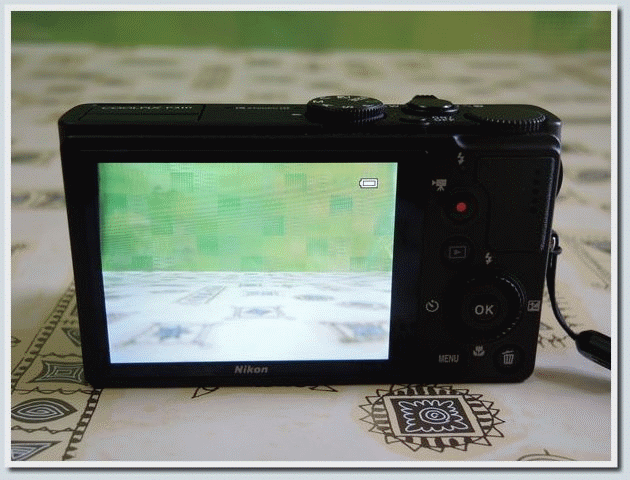
In automatic shooting mode, pressing the multi selector “right”, you can set a correction for the exposure if necessary.
- turn on the timer (by pressing "left" on the multi selector; you can set the timer for 2 seconds or 10 seconds, the smile timer is also available here);
- choose the focus method from the following options: Autofocus, Macro, Infinity, Manual focus (to select this option, press “down” on the multi selector);
- when the flash is open, select the appropriate mode for the flash from the available ones (open the flash, press up on the multi selector; the following options are available: Auto, Auto with red-eye reduction, Flash off, Fill-flash, Slow sync, Rear-curtain sync )

In automatic shooting mode, pressing the multi selector “right”, you can set a correction for the exposure if necessary.
On the back of the Nikon COOLPIX P7700 you will find a contrasting rotary screen with a wide viewing angle, a switch that opens the flash, a DISP button (changes the way the information is displayed on the screen), a shutter speed control (under the thumb), an exposure lock / focus lock switch (button AE-L / AF-L), a button for switching from the snapshot mode to the photo view mode, the rotary multi selector, the MENU button and the button for deleting pictures in the photo view mode.
Learn more about the multi selector in the COOLPIX P7700.
The multi selector in manual shooting mode allows you to:

- нажав «влево» на мультиселекторе — включить таймер (доступны опции 1с, 2с и 10с), запустить таймер улыбки или активировать управление затвором с пульта (можно включить срабатывание затвора сразу после нажатия кнопки на пульте, а также через 1 секунду, 2 секунды или 10 секунд после активации кнопки на пульте);
- нажав «вниз» на мультиселекторе — задать способ фокусировки фотоаппарата (доступны опции: Автофокусировка, Только близкое расстояние, Макросъемка, Бесконечность, Ручная фокусировка);
- нажав «вправо» на мультиселекторе — выбрать подходящий режим зоны автофокуса из следующих опций: Приоритет лица, Авто, Ручной выбор, Центр (нормальный), Центр (широкий), Ведение объекта, АФ с обнаружением объекта;
- pressing "up" on the multi selector with the flash open - adjust the flash by selecting any of the following options: Auto, Auto mode with red-eye reduction, Fill-flash, Manual (you can choose any of 5 available power settings: Full, 1/2 , 1/4, 1/8, 1/16), Slow synchronization, Rear curtain sync, Control mode.

There is no optical viewfinder on the Nikon COOLPIX P7700 and Nikon COOLPIX P310. Right side view: COOLPIX P310 , COOLPIX P7700

On the right panel of the Nikon COOLPIX P310 you will find the HDMI connector. In the case of the Nikon COOLPIX P7700 model, HDMI and USB / AV connectors are located on the right, covered by a plastic door.
On the left panel of the COOLPIX P310, there is a lever on top for opening the flash. On the left panel of the COOLPIX P7700, you will find a jack for connecting an external microphone, as well as a jack for connecting an external GPS receiver.

Left side view: COOLPIX P310 , COOLPIX P7700 The following elements are located on the top panel of the Nikon COOLPIX P310 camera: a pop-up flash, a mode dial, a power button, a shutter button for adjusting shutter speed, and a shutter combined with a zoom lever.
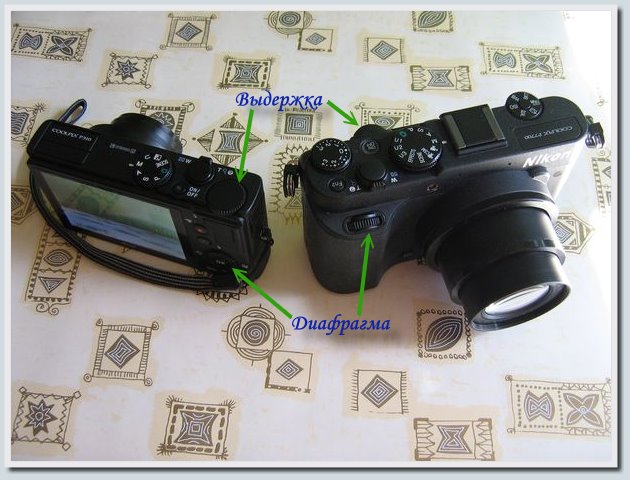
Nikon COOLPIX P310 - top view
The following elements are located on the top panel of the Nikon COOLPIX P7700 camera: a pop-up flash, a quick access dial to the settings, a hot shoe for connecting a flash, a dial for shooting modes, a power button, a wheel for manual exposure compensation, a second programmable Fn2 button and a shutter, combined with a lever for controlling zoom.
Nikon COOLPIX P7700 - top view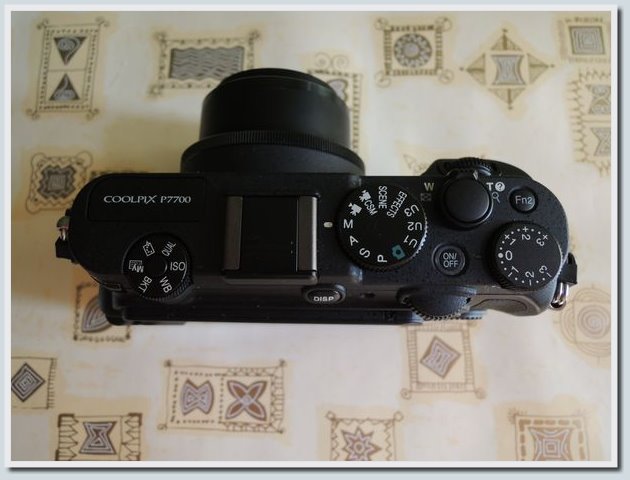
Using the shooting mode dial, you can select the appropriate mode: Manual M , Video, Custom video, Auto / Scene selection, Effects, 3 user modes U1 , U2 and U3 , Auto, Program Auto. mode P , automatic shutter priority mode S , Auto Mode Aperture Priority A .
Using the quick access dial to the settings, which is located to the left of the “hot shoe”, you can change the image quality ( QUAL ), photosensitivity ( ISO ), white balance ( WB), as well as a number of other important parameters.

Using the shooting mode dial, you can select the appropriate mode: Manual M , Video, Custom video, Auto / Scene selection, Effects, 3 user modes U1 , U2 and U3 , Auto, Program Auto. mode P , automatic shutter priority mode S , Auto Mode Aperture Priority A .
Using the quick access dial to the settings, which is located to the left of the “hot shoe”, you can change the image quality ( QUAL ), photosensitivity ( ISO ), white balance ( WB), as well as a number of other important parameters.

Bottom view: COOLPIX P310 , COOLPIX P7700
On the bottom of the COOLPIX P310 and COOLPIX P7700 cameras are the compartments for the battery and memory card, as well as a tripod socket (ISO 1222). In the younger model, on the bottom panel, in addition to this, there is a universal microUSB connector, designed to connect the AV and data cable, through which the battery is also charged.
You can look at Nikon COOLPIX P310 and Nikon COOLPIX cameras from different angles, you can also by opening the spoilers:
Also, these photos can be viewed in the folder on Dropbox .
Nikon COOLPIX P310 and Nikon COOLPIX P7700 - manual shooting mode
Both cameras give you the opportunity to take pictures in several automatic modes, there is also a large set of preset scene modes, but I personally was most interested in taking pictures in manual mode.
When photographing in manual shooting mode, the parameters that have to be changed most often are the shutter speed and aperture size. In both models of cameras under consideration, these parameters are regulated by two wheels.
In the case of the Nikon COOLPIX P7700, the wheels for adjusting shutter speed and aperture are moved to the rear and front panels of the camera, it is very convenient (exposure control with the thumb of the right hand, exposure control with the index finger):

In the case of Nikon COOLPIX P310, the aperture in shooting mode can be changed using the multi selector, the shutter speed is controlled by the dial on the top panel. Both parameters are most conveniently changed with the thumb of the right hand. Important options such as a timer (and remote control for the COOLPIX P7700), focusing method and flash control in both models are placed on a circular multi selector located on the back of the camera to the right of the screen. The list of available options for these parameters I have already given above under the spoiler. For clarity, I made a slideshow in which I showed the possibilities that the user provides with the wheel and multi-selector joystick on the rear of the camera: Nikon COOLPIX P310 , Nikon COOLPIX P7700 .

In the COOLPIX P7700 model, you can also select the appropriate AF zone mode (for the COOLPIX 310 model, changing this parameter is possible only through the menu).
The list of settings for COOLPIX P310 and COOLPIX P7700 cameras, which can be accessed by pressing the MENU button on the back of the camera, will be shown below in a slideshow. Before that, I wanted to show you some of the options of the COOLPIX P7700 camera, access to which can be obtained much faster than through the menu thanks to the additional disk manipulator on the top panel of the camera.

QUAL - it is interesting here to look at the available image resolutions. In square brackets the number of pictures with the selected parameters is displayed, which will have enough free space on the flash drive.
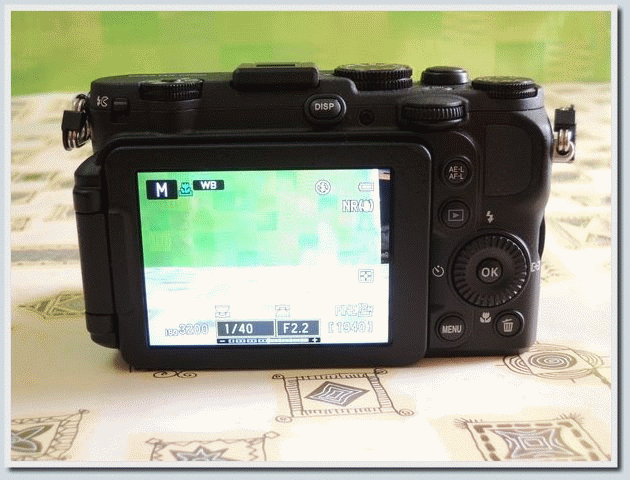
When working with the Nikon COOLPIX P7700, you have the option of saving pictures in RAW format .
The ISO sensitivity of the Nikon COOLPIX P7700 can also be adjusted using the optional control dial located on the top of the camera. ISO values from 80 to 3200 are available, there is also the option Hi1 (equivalent to ISO 6400).
You can also set the white balance ( WB ) on the COOLPIX P7700 using this dial pad, I list the available options below as a slideshow:
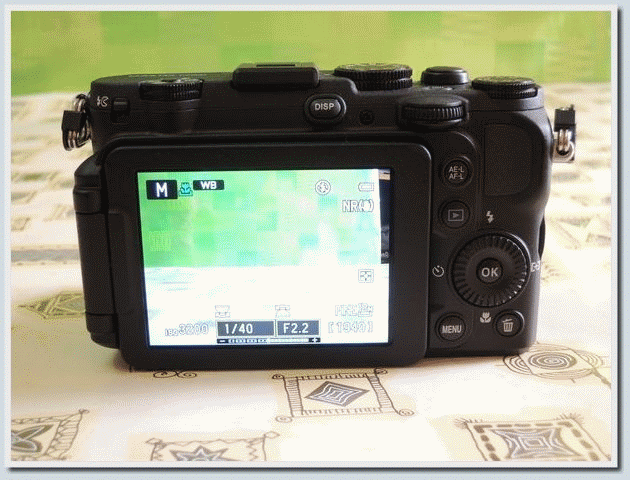
You can see other settings available for manual shooting via the menu by opening the spoilers:
Nikon COOLPIX P310 - camera settings available through the menu
Nikon COOLPIX P7700 - настройки фотоаппарата, доступные через меню
В слайдшоу показал не все из доступных настроек. Также, отмечу, что производитель немного разгрузил главное меню настроек, перебросив часть опций на дисковый манипулятор, расположенный на верхней панели фотоаппарата слева.
Структуру меню настроек Nikon COOLPIX P7700 (за исключением некоторых опций) смотрите ниже в виде блок-схем:
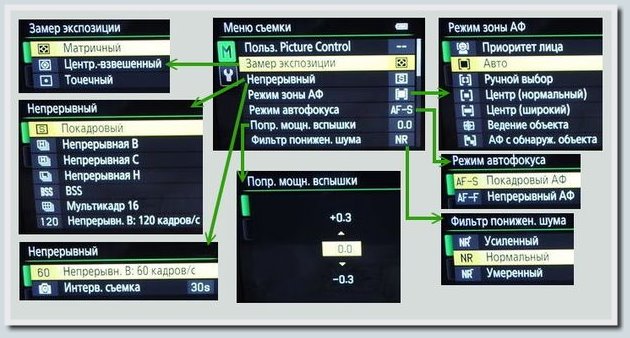

В отличии от модели COOLPIX P310, в фотоаппарате Nikon COOLPIX P7700 есть дополнительный режим съёмки видео, дающий больше контроля в процессе съёмки. В этом режиме вы можете задать качество для видео (QUAL), светочувствительность (ISO), подогнать баланс белого под условия освещения (WB), включить режим подавления шумов от ветра, а также использовать специальные эффекты съёмки. Баланс белого, светочувствительность и качество видео регулируется дисковым манипулятором на верхней панели фотоаппарата, доступ к другим настройкам вы можете получить через меню.
Сделал небольшое слайдшоу, в котором ту часть опций видеозаписи, которая доступная через меню:
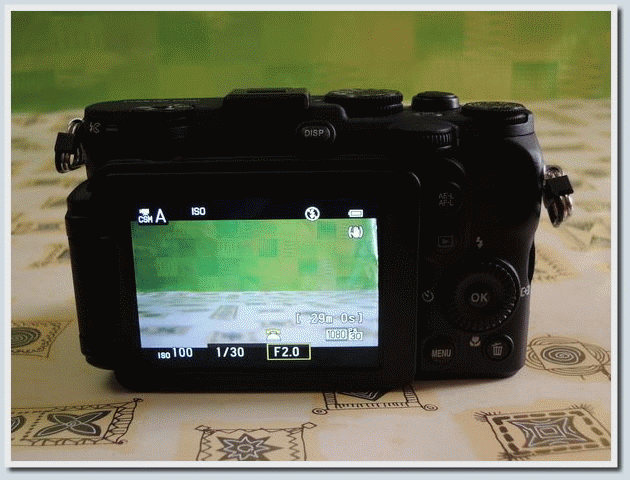

В слайдшоу показал не все из доступных настроек. Также, отмечу, что производитель немного разгрузил главное меню настроек, перебросив часть опций на дисковый манипулятор, расположенный на верхней панели фотоаппарата слева.
Структуру меню настроек Nikon COOLPIX P7700 (за исключением некоторых опций) смотрите ниже в виде блок-схем:


В отличии от модели COOLPIX P310, в фотоаппарате Nikon COOLPIX P7700 есть дополнительный режим съёмки видео, дающий больше контроля в процессе съёмки. В этом режиме вы можете задать качество для видео (QUAL), светочувствительность (ISO), подогнать баланс белого под условия освещения (WB), включить режим подавления шумов от ветра, а также использовать специальные эффекты съёмки. Баланс белого, светочувствительность и качество видео регулируется дисковым манипулятором на верхней панели фотоаппарата, доступ к другим настройкам вы можете получить через меню.
Сделал небольшое слайдшоу, в котором ту часть опций видеозаписи, которая доступная через меню:

Примеры фотографий
Below I present to you the photographs of birds taken by Nikon COOLPIX P310 and Nikon COOLPIX P7700 cameras. With the maximum use of the optical zoom capabilities, in addition to the birds themselves, less interesting objects also fell into the frame, which I would like to omit, fully focusing on the birds. Therefore, many of the photographs that I give below are rectangular fragments of those photographs that I took using the cameras described in this topic. I was advised to apply autofocus and autoton to some photos, but after thinking, I decided to leave it in the form in which it turned out (without editing).
To begin with, I will show a photograph showing the approximate snow height that fell in Kiev in March this year:

In such bad weather, different types of birds flocked to the feeder, which is visible from my window. It was possible to recognize not all birds, but tits , sparrows, ringed doves , finches and bullfinches were definitely there. I managed to capture some birds, I bring the photos below.
Bullfinch:

Ring-necked turtledove:
Taken with the Nikon COOLPIX P310: Taken with the Nikon COOLPIX P7700: Ringed Turtle Dove on Wikipedia
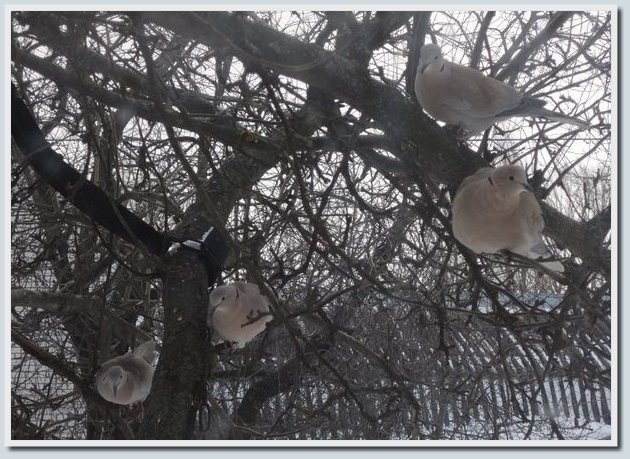
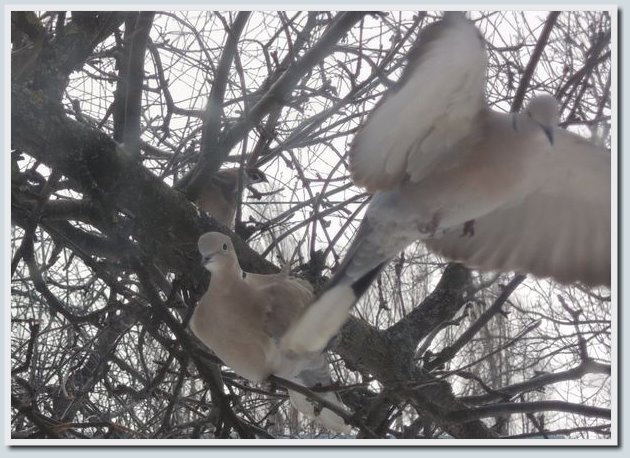
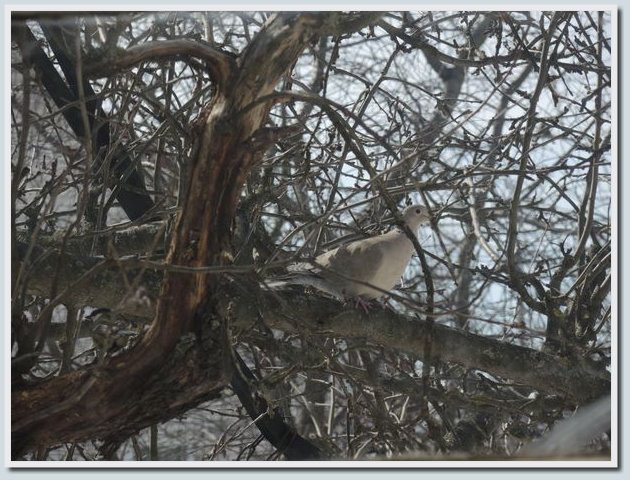
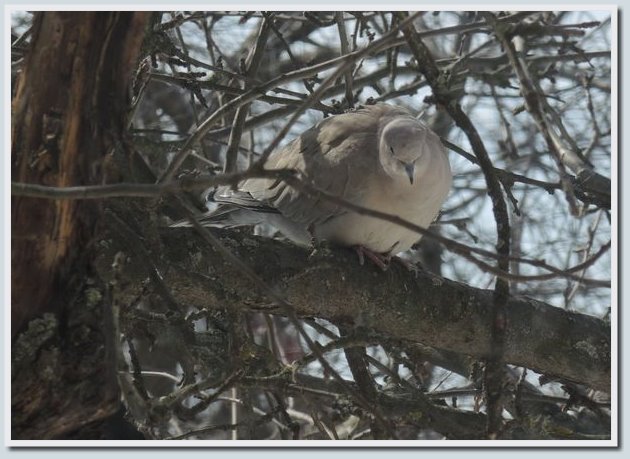
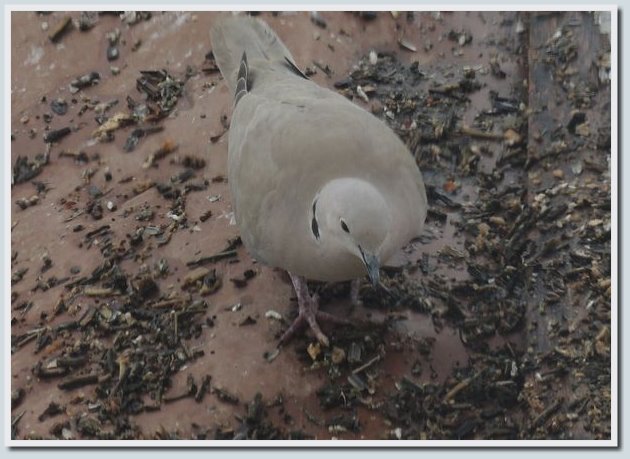
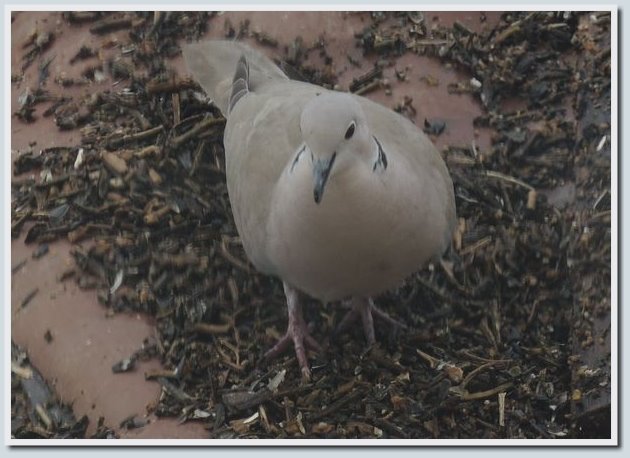






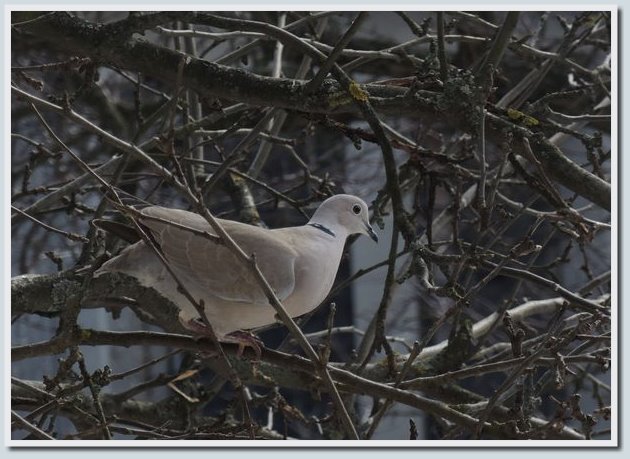
Greenfinch ordinary:

Great tit:

Finch:

More bird pictures taken with Nikon COOLPIX P310 and Nikon COOLPIX P7700 cameras can be found in the album on Dropbox .
Also, as examples of pictures taken with the Nikon COOLPIX P7700, I want to give photos of the young cat Maximilian, who recently settled with my friend. Photos of the kitten uploaded to dropbox, if you wish, you can see them in this album .
Cat Maximilian:
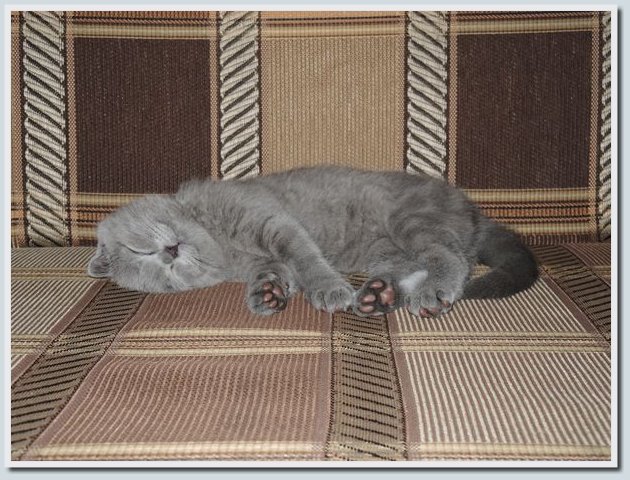
Except for the photographs of birds and a kitten, the quality of the pictures taken with COOLPIX P310 and P7700 cameras can be estimated from the photos of the devices in this review (I hid a lot under the spoilers; I took those photos on which 2 devices were shot at an old soap dish, pictures, where only one of the cameras is presented, made it the second tested camera from the Performance series).
Shooting a video
The Nikon COOLPIX P310 and Nikon COOLPIX P7700 cameras have the ability to shoot video in FULL HD (1920 x 1080, 1080p), but I personally have 720p (1280 x 720) quality for comfortable viewing on a 23-inch monitor with a head.
Since birds often visited the feeder in the cool snowy March, I decided to test the possibilities of shooting video on the tested cameras. To do this, I took a tripod Slik Sprint Pro II 3 Way for a while (I will briefly describe the tripod photos and my impressions of working with it), installed a camera on it and started shooting.
I didn’t have enough capabilities of the 4x optical zoom of the COOLPIX P310 model to shoot birds in close-up, but the test video that was shot with this camera (both in 1080p and 720p) was of quite decent quality. But the 7x optical zoom of the older Nikon COOLPIX P7700 model turned out to be very useful, thanks to which I shot more than 3 hours of video material about birds with this camera. In both cameras there is a restriction on video recording - 29 minutes, so most of the videos that I shot lasting 25-27 minutes.
Having selected the most interesting moments, I mounted a short 7-minute video, which I present to your attention to assess the quality of the video captured using the Nikon COOLPIX P7700:
I recommend watching in full screen mode at a sufficient volume level.
When mounting the video, we had to solve the problem of extracting the video track from the MOV container and placing the same track in the MPEG-4 media container (the program in which the video was mounted did not support files with the .mov extension). The program Avidemux coped with this task.
Four models of Performance cameras went through my hands: COOLPIX P300, COOLPIX P310, COOLPIX P7100 (with this camera I even have a couple of video additions to the reviews of Kindle and Nook Simple Touch readersdid) and the COOLPIX P7700. I did not record video only with the COOLPIX P300. The remaining 3 models when recording video save the captured video to files with the extension .mov.
Perhaps I thought someone might use the information on how to quickly transfer video from a MOV container to MPEG-4 (.mov -) .mp4 for editing video captured using one of the cameras described in this review. Who cares, the information below is under the spoiler.
From MOV to MPEG-4 using Avidemux
Переброс видеоматериала из .mov в .mp4 целиком:
Запустить программу Avidemux -) открыть файл видео с расширением .mov (File -) Open) -) на переключателе Output Format выбрать опцию MP4 Muxer -) сохранить видео в новом файле, выбрав его расположение и задав имя (File -) Save)
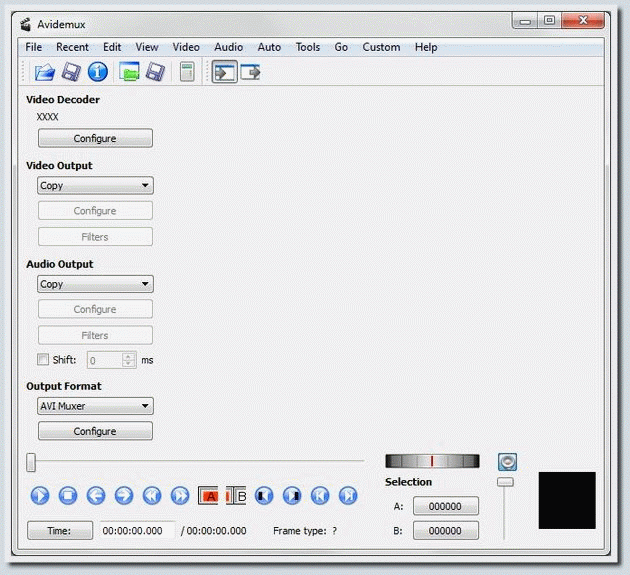
Переброс фрагмента видеоролика .mov в отдельный файл с расширением .mp4:
Запустить программу -) открыть файл видео в формате .mov -) перетащить ползунок на временной шкале в начальную позицию интересующего вас видеофрагмента -) нажать кнопку выбора начала фрагмента (на панели под временной шкалой 7я кнопка слева) -) перетащить ползунок к концу интересующего вас фрагмента видео -) нажать кнопку выбора конца фрагмента видео (8я слева на нижней панели) -) сохранить выделенный фрагмент (File -) Save)
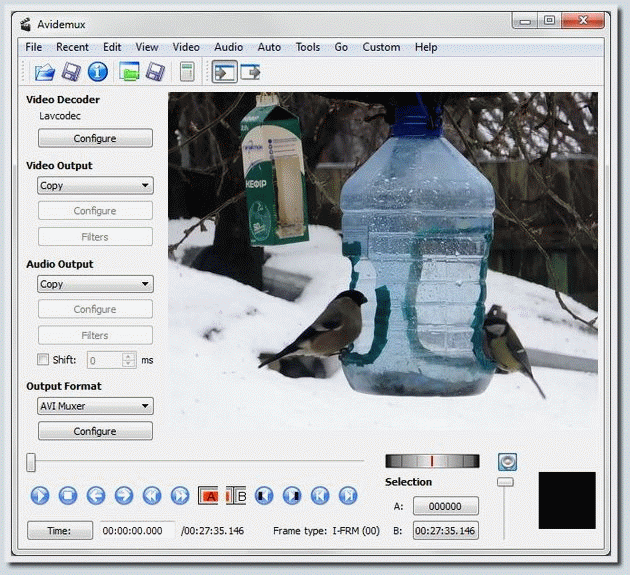
Не могу гарантировать, что это решение подойдёт для всех случаев, но для опробованных мной фотоаппаратов (Nikon COOLPIX P310, Nikon COOLPIX P7100 и Nikon COOLPIX P7700) этот метод работает.
Запустить программу Avidemux -) открыть файл видео с расширением .mov (File -) Open) -) на переключателе Output Format выбрать опцию MP4 Muxer -) сохранить видео в новом файле, выбрав его расположение и задав имя (File -) Save)

Переброс фрагмента видеоролика .mov в отдельный файл с расширением .mp4:
Запустить программу -) открыть файл видео в формате .mov -) перетащить ползунок на временной шкале в начальную позицию интересующего вас видеофрагмента -) нажать кнопку выбора начала фрагмента (на панели под временной шкалой 7я кнопка слева) -) перетащить ползунок к концу интересующего вас фрагмента видео -) нажать кнопку выбора конца фрагмента видео (8я слева на нижней панели) -) сохранить выделенный фрагмент (File -) Save)

Не могу гарантировать, что это решение подойдёт для всех случаев, но для опробованных мной фотоаппаратов (Nikon COOLPIX P310, Nikon COOLPIX P7100 и Nikon COOLPIX P7700) этот метод работает.
Штатив Slik Sprint Pro II 3 Way, пульт дистанционного управления MeiKe MLL3 и набор для чистки Lenspen DSLR PRO KIT
Experimenting with Nikon COOLPIX P310 and Nikon COOLPIX P7700 cameras, in addition to the cameras, I bought some accessories (a remote control and an optical cleaning kit), and also took a tripod for a while to be able to shoot video. I decided to briefly talk about them at the end of the review.
I really liked the tripod, a manufacturer from Japan, but the tripods of this model are assembled in Thailand.
The tripod looks like this:

Slik Sprint Pro II 3 Way - Some More Photos
The tripod is very convenient: it is possible to rotate the mounted camera around 3 axes out of the box (you do not need to buy special tripod heads for this purpose), lightweight, but at the same time durable and reliable, compact (when folded), in general, I really liked it. Up to 3 sections can be extended in the legs, a maximum height of 162 cm is declared, designed for cameras weighing up to 2 kilograms. A very practical and useful thing, I appreciated!
Most of the photographs of the birds I took from the window, but some of the birds are afraid of people. Turtles noticing me next to the camera often flew away, I thought that I should try to shoot using the remote control (the camera is mounted on a tripod, I'm on the side, the shutter is released when the button on the remote control is pressed). I took for this purpose the Chinese MeiKe MLL3 remote control, which completely coped with the task assigned to it.
This remote control looks as follows:
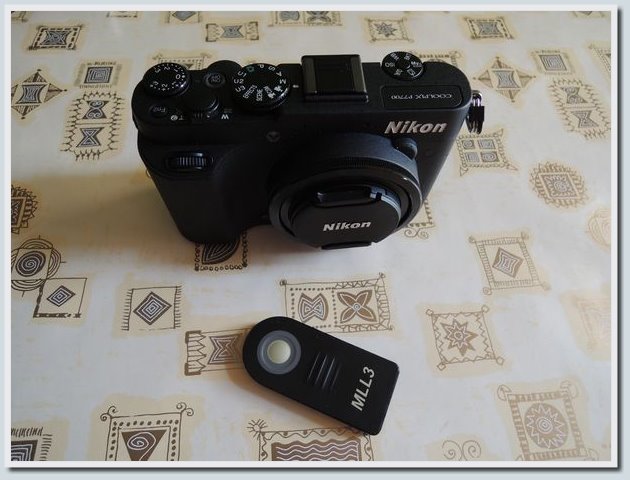
Those pictures that I took with a tripod, out of inexperience, did in the auto focus mode. But, I think it's better to use center focus.
In the Nikon COOLPIX P7700, when using the remote control, you can select the shutter release option from the following options: release the shutter by click, 1 second, 2 seconds after pressing or 10 seconds.
During my experiments with cameras, I accidentally put a fingerprint on the lens of a Nikon COOLPIX P7700 camera. It was necessary to clean the lens, which I did not do before. Googling, I found information on how to do this better. Choosing a kit for cleaning optics, I stopped at the typewriter Lenspen DSLR PRO KIT.

When choosing, I was looking for a cleaning kit suitable for both DSLRs and compact cameras.
He stopped on a set from Lenspen, which includes:
- 1 “pencil” for cleaning the Lenspen Filterklear filters (diameter of the cleaning pad - 13 mm);
- 2 “pencils” for cleaning lenses: Lenspen Original (13 mm diameter) - for cleaning SLR lenses and advanced compacts and Lenspen MicroPro (4 mm diameter) - for cleaning mini lenses in compact digital cameras, as well as for cleaning optical viewfinders in mirrors;
- Microfibre napkin with pockets for “pencils” sewn on it (serves as a “case” - convenient and practical).
I personally cleaned the Nikon COOLPIX P7700 lens with a Lenspen Original “pencil” and the Nikon COOLPIX P310 lens with a Lenspen MicroPro “pencil”. Conveniently and quickly, after cleaning the lenses as new.
On this small review of compact cameras COOLPIX P310 and COOLPIX P7700 from Nikon I will end. It is difficult to list the advantages of the devices, since there are a lot of them. Excellent image quality under different lighting conditions, convenient thoughtful control, the ability to shoot high-quality video in different resolutions up to FULL HD - all these are the strengths of both cameras.
- Nikon COOLPIX P310 — компактный и лёгкий фотоаппарат, легко помещающийся во внутренний карман куртки или пиджака. Качество снимков — отличное, при выборе ручного режима вы можете регулировать выдержку, диафрагму, светочувствительность, баланс белого и ряд других полезных параметров. Доступно большое количество предустановленных режимов съёмки.
- Nikon COOLPIX P7700 — продвинутый компакт, предоставляющий ещё больше возможностей для экспериментов с фотографиями и видео. Объектив с 7.1-кратным оптическим зумом; качественная матрица, которая в связке со светосильным объективом даёт возможность делать качественные снимки; возможность снимать отличное видео; поддержка управления с пульта дистанционного управления; возможность подключения внешней вспышки через «горячий башмак» — вот неполный список достоинств этой модели.
I really liked both cameras, it’s really nice to photograph them! For those who plan to buy a camera better than cheap soap dishes but simpler than DSLRs, I recommend paying attention to these models. If you plan to take up photography tightly, these cameras are also good because controlling these devices is similar to managing DSLRs (it will be easier to switch to a more serious camera over time).
On this I will put the final point, I hope the review turned out to be interesting and informative.
I express gratitude to Nikon Ukraine for the provided Nikon COOLPIX P310 and Nikon COOLPIX P7700 cameras , as well as to PROFOTO company, who provided an excellent tripod Slik Sprint Pro II 3 Way, which helped a lot when filming birds.
Thank you all for your attention, good shots and good mood!



